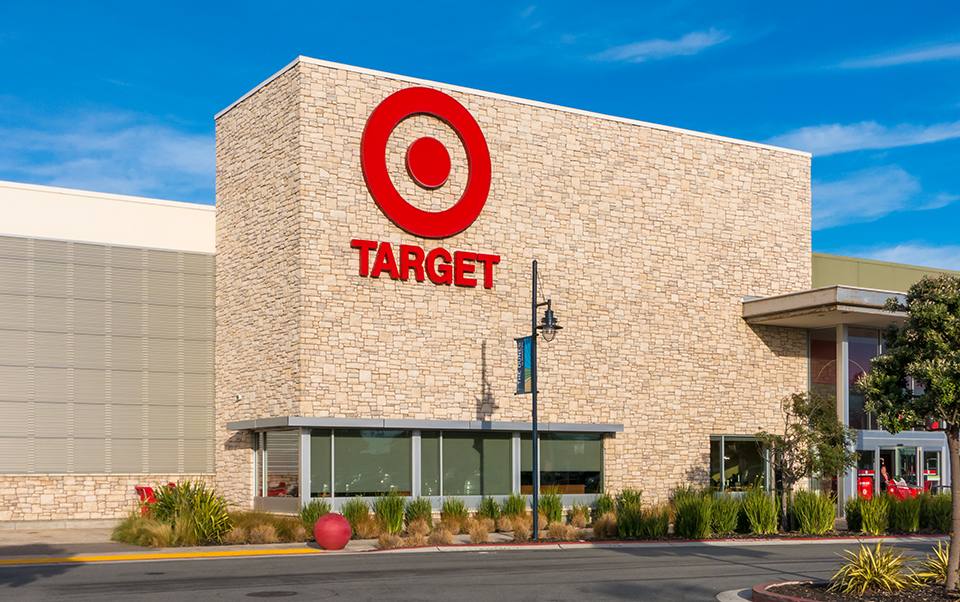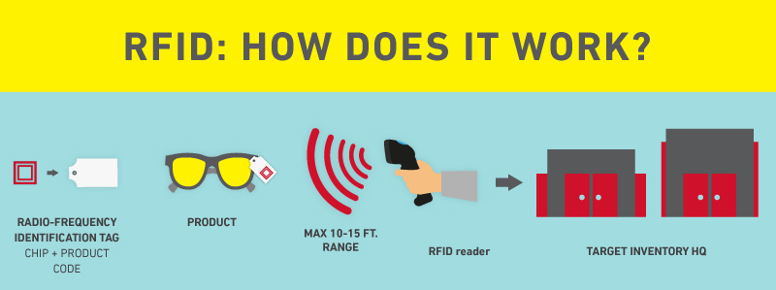Revolutionizing Retail: The Implementation of RFID in Target Stores

Target's RFID Implementation
Target, a leading retail giant, has fully embraced RFID technology as a revolutionary tool to optimize its supply chain management and enhance customer shopping experiences. By integrating RFID tags into their inventory tracking system, Target has gained unparalleled real-time visibility into their merchandise, streamlined inventory management processes, reduced stock-outs, and overstock situations.
RFID technology has allowed Target to not only increase operational efficiencies, but also offer its customers a seamless and personalized shopping experience, further solidifying their position as a frontrunner in the retail industry. Additionally, the implementation of RFID technology has enabled Target to improve the accuracy and speed of its inventory counts, leading to more efficient restocking processes and reduced labor costs. Pricing accuracy has also been enhanced, ensuring that customers are charged correctly and eliminating pricing discrepancies.
Brief History of Target and RFID
2015 Implementation
Target's implementation of RFID technology took place in 2015 a few years after Walmart’s RFID implementation. The RFID rollout started in a small number of stores towards the end of 2015 and then started to expand to all Target Stores in 2016. The technology was first implemented across categories, including women’s, baby and kids’ apparel, and home decor. The decision for Target to use RFID technology was driven by the need to improve inventory accuracy, reduce supply chain inefficiencies, and enhance the overall shopping experience for customers. RFID offered a more advanced and automated approach to tracking inventory compared to traditional barcode systems, allowing for real-time visibility of merchandise from the distribution center to the store shelves.
Target’s Executive Vice President of Global Supply Chain Operations, Keri Jones, had high hopes for the implementation, and said during the initial deployment.
“It’s a really exciting time to be in retail, thanks to extraordinary developments in technology that have made it possible to create, build and scale new retail concepts at unprecedented speeds.
You probably wouldn’t notice these new RFID tags on your own, necessarily, but that’s the point. This unobtrusive but significant technology will increase efficiencies by providing greater visibility into our inventory. That means guests will better be able to find out whether we’ve got the item at their Target store or at others nearby. We also expect RFID to help us better fulfill online orders placed for store pickup, which already account for 15 percent of Target.com purchases.”
Target's 2015 implementation involved tagging products with RFID chips and integrating the technology into its supply chain and inventory systems.
How Target uses RFID to Improve
Target recognized their need for more accurate and improved inventory accuracy, with stocking issues they were facing. RFID minimizes overstocking, under stocking, and stock-outs. With RFID, Target can quickly identify when products are running low and trigger automatic replenishment orders, reducing the chances of products being out of stock.
Target used RFID to enhance the customer experience as a whole by providing a better shopping experience with curbside and in-store pick-up, while ensuring products are available when customers need them. The reason Target’s store and curbside feature service are so successful is because of their ability to track all their inventory in real time.
Here are the top three ways Target uses RFID:
- Improve Inventory Management Processes: RFID tags are placed on individual products, enabling the company to track them at each stage of the supply chain, from distribution centers to store shelves. This real-time visibility allows Target to maintain accurate and up-to-date inventory levels, reducing stock-outs and overstock situations. With better inventory control, Target can efficiently restock products, enhance order fulfillment, and improve overall operational efficiency.
- Improve Product Tracking and Location: RFID technology enables Target to precisely track the movement of products within its stores. By deploying RFID readers at various locations, such as entrances, exits, and backroom areas, Target can monitor the flow of merchandise and locate specific items quickly. This capability streamlines the process of finding products for customers and assists with restocking activities, ensuring that the right products are available at the right place and time.
- Enhanced Customer Experience: Target leverages RFID technology to enhance the shopping experience for its customers. The implementation of RFID has enabled features such as "Endless Aisle" where customers can locate and purchase products that might not be physically present in the store they visit.
Target employs the concept of the "Endless Aisle," allowing customers to obtain desired products that might not be immediately available in-store yet have the option to have them delivered to their home within a few days.
The "Order Pickup" service streamlines the process for customers to make online purchases and subsequently retrieve their selected items from a nearby Target store without the need to navigate through store aisles. This service incorporates a real-time inventory tracking system, empowering customers to choose from the online catalog of available items. A Target team member retrieves the chosen products from the shelves, ensuring they are ready for pickup within two hours. By accessing real-time inventory information through RFID, Target can offer a wider selection of products to customers, making their shopping experience more convenient.
Return on Investment
Target has reported positive outcomes and returns on its investment in RFID technology. While specific financial data and ROI figures are not publicly available, the company has highlighted several benefits and improvements resulting from the implementation of RFID.
RFID technology has played a crucial role in enhancing the customer shopping experience at Target. Real-time inventory information has allowed customers to access a wider range of products and have a more seamless shopping experience across channels.
By minimizing manual inventory checks and providing accurate inventory data, Target's RFID implementation has also likely resulted in labor cost savings and improved employee productivity.

Target’s RFID Implementation: RFID Tags and Readers
Target uses Avery Dennison’s broad UHF RFID portfolio for a variety of categories including apparel and several home products. Target store employees have started using the Android-based Zebra Technologies TC51 as part of the retailer’s MyDevice program for sales floor activities, stocking, and other purposes, replacing the Apple iPod Touch devices that store associates previously used for these functions. This mobile reader is not RFID-enabled, so they use the Zebra RFD8500 Bluetooth Handheld UHF RFID Sled in conjunction with the TC51.
Opinions & Learning Curve
What Employees Think
Target employees appreciate the RFID implementation for its ability to streamline inventory management and supply chain processes. With better visibility into stock levels and locations, employees responsible for restocking and managing inventory find their tasks more efficient and straightforward.
Employees in customer-facing roles, such as sales associates, also view RFID as a positive development because it allows them to provide better customer service. Real-time inventory information enables them to assist customers in finding products quickly and accurately, resulting in more satisfied shoppers.
What Retailers Can Learn from Target
Retailers looking to adopt RFID can draw valuable lessons from Target's successful implementation of the technology, which improved inventory accuracy, streamlined their supply chain, and minimized out-of-stock situations. This has led to enhanced customer experiences, quicker checkout times, and better decision-making based on data-driven insights. By observing Target's accomplishments with RFID, other retailers can recognize the potential benefits and opportunities that come with implementing the technology in their own operations.
Conclusion
Every day, the retail industry faces various challenges. Fortunately, Target has found a solution by implementing RFID technology to address these issues. By achieving inventory transparency and availability, Target has gained a competitive edge in the retail market. This enhanced transparency has also enabled them to ensure timely product shipments. The implementation of RFID technology has significantly improved the customer experience for Target's supply chain stores.
The success stories of other firms that have adopted RFID technology are evident, with companies like Amazon, Walmart, and Zara all benefiting from its implementation.
Sources:
https://corporate.target.com/article/2015/05/Keri-Jones-Perspectives-RFID
https://www.retailtouchpoints.com/features/news-briefs/target-deploys-rfid-in-1-600-stores
https://risnews.com/targets-rfid-and-fulfillment-investments-lead-massive-increase-digital-sales
https://www.centricdigital.com/blog/target-improved-sales-omnichannel-customer-experience-rfid
https://www.rfidcard.com/target-and-rfid-technology-achieving-high-customer-experience/
